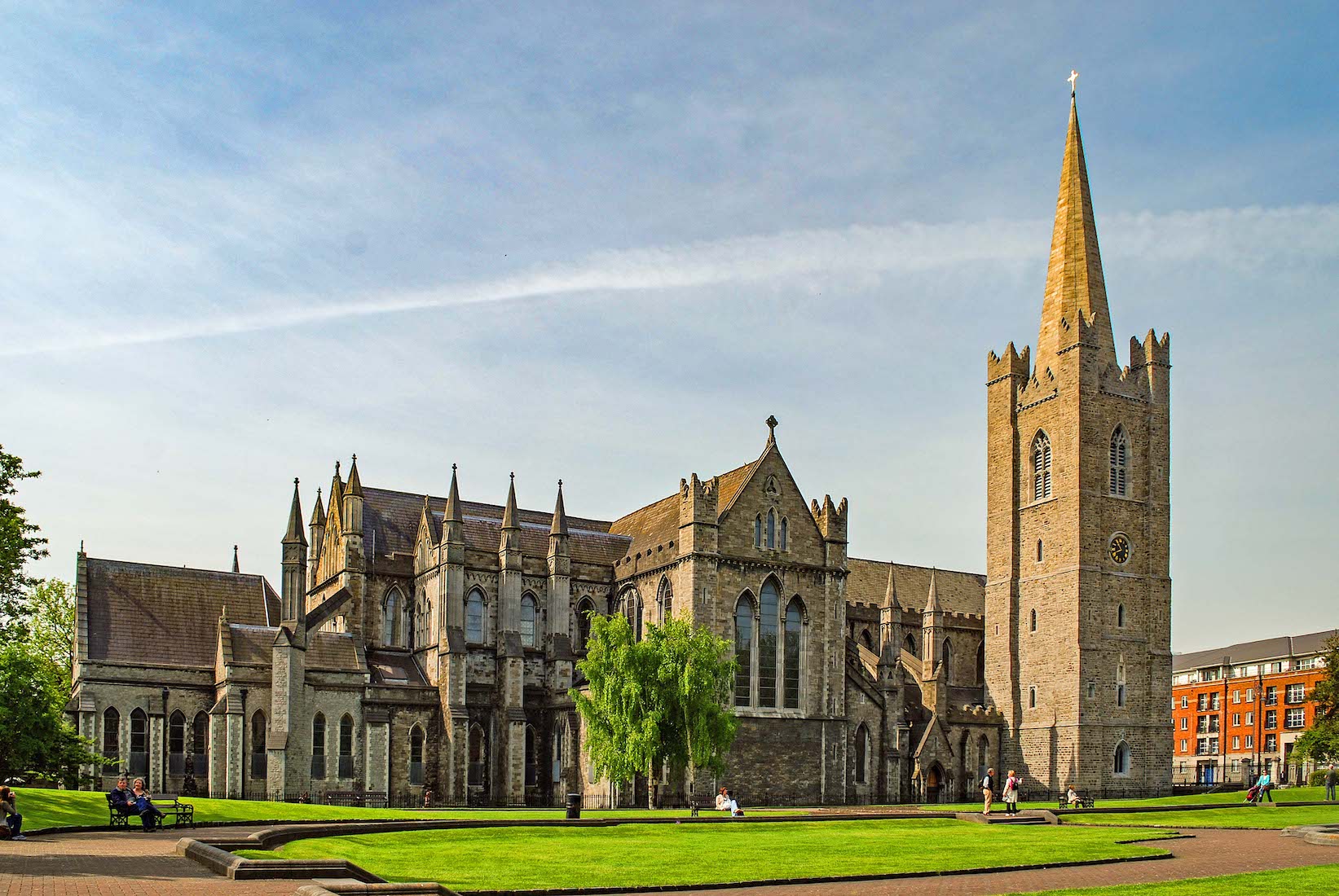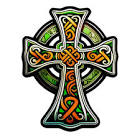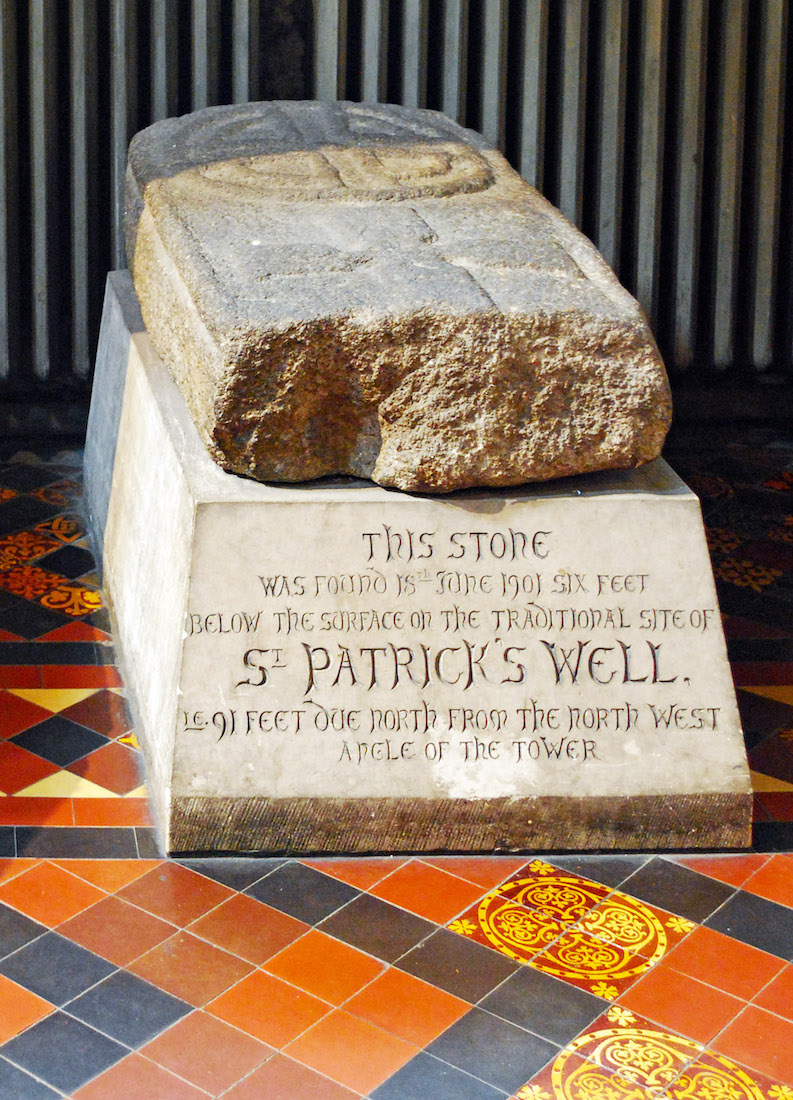
St Patrick’s Cathedral is a second Church of Ireland Cathedral in Dublin. The main photographic contributor to this site is ‘Le Monde1’, with whom I have worked before. Smaller numbers of photos have come from Google Street View. Many photos of the stained glass windows come from the Wikimedia entry ‘Gloine’. There are also several accredited photos under the Creative License scheme, CCL, acknowledged in the text. The initials LM, GSV, W-G will denote our main contributors. Further details about our main contributors are given in the Conclusion. I have been delighted at how ready people have been to let me use their excellent photos.
A satellite view, plan, and brief history of this Cathedral are given below. However, you can also access points in the tour immediately by tapping / clicking on the following links:
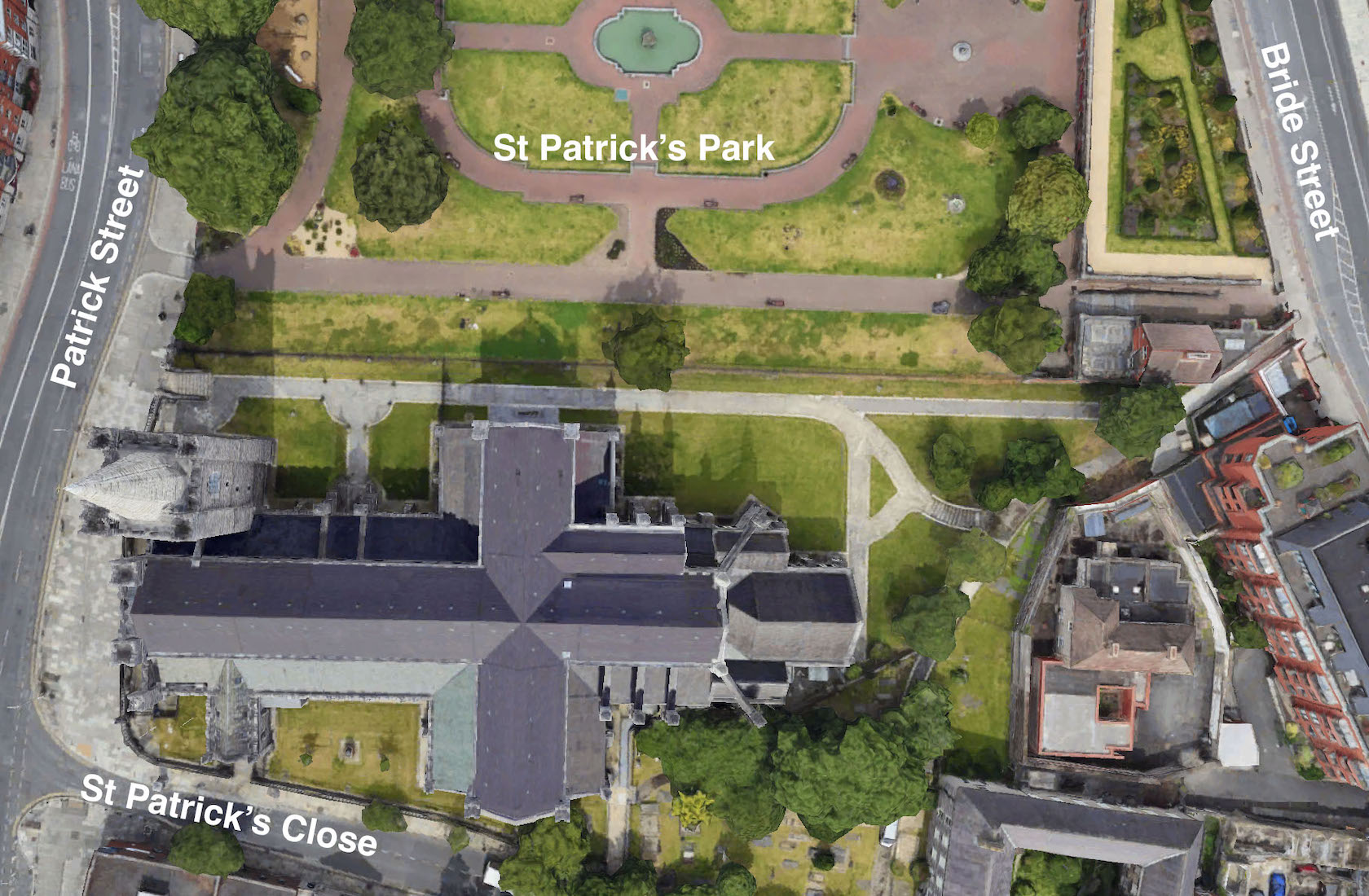
SATELLITE VIEW
St Patrick’s Cathedral has a basic cruciform shape with added aisles all the way round.
We notice that the axis of the Cathedral is directly east west with the sanctuary at the eastern end. This means that our liturgical directions which we use here (capital initial letters with East at the sanctuary end), exactly coincide with the geographical directions.
The Cathedral is bounded by St Patrick’s Park to the North, Patrick Street to the West, St Patrick’s Close to the South, and Bridge Street, at a little distance, to the East. The Cathedral is surrounded almost completely by a wrought iron fence, excluding the public from the grounds. I notice that there are no photographs online taken from the Eastern Cathedral grounds: this suggests that even the apparent access from Bridge Street is barred by a gate.
The Cathedral has a prominent tower and spire in the Northwest corner, and a South porch entry from St Patrick’s Close. At the East end, a Lady Chapel with two open adjoining chapels has been added, reinforced by two angled flying buttresses. Also, just East of the North transept, an added small gable to the East has been added. We shall find that this accommodates organ pipes.
We shall begin our external exploration of St Patrick’s Cathedral starting near the South entry, and proceeding in a clockwise direction via Patrick Street and across the Park. We then use several drone photographs which will help us understand the interesting Eastern end of the Cathedral, before returning along St Patrick’s Close to the South entrance.
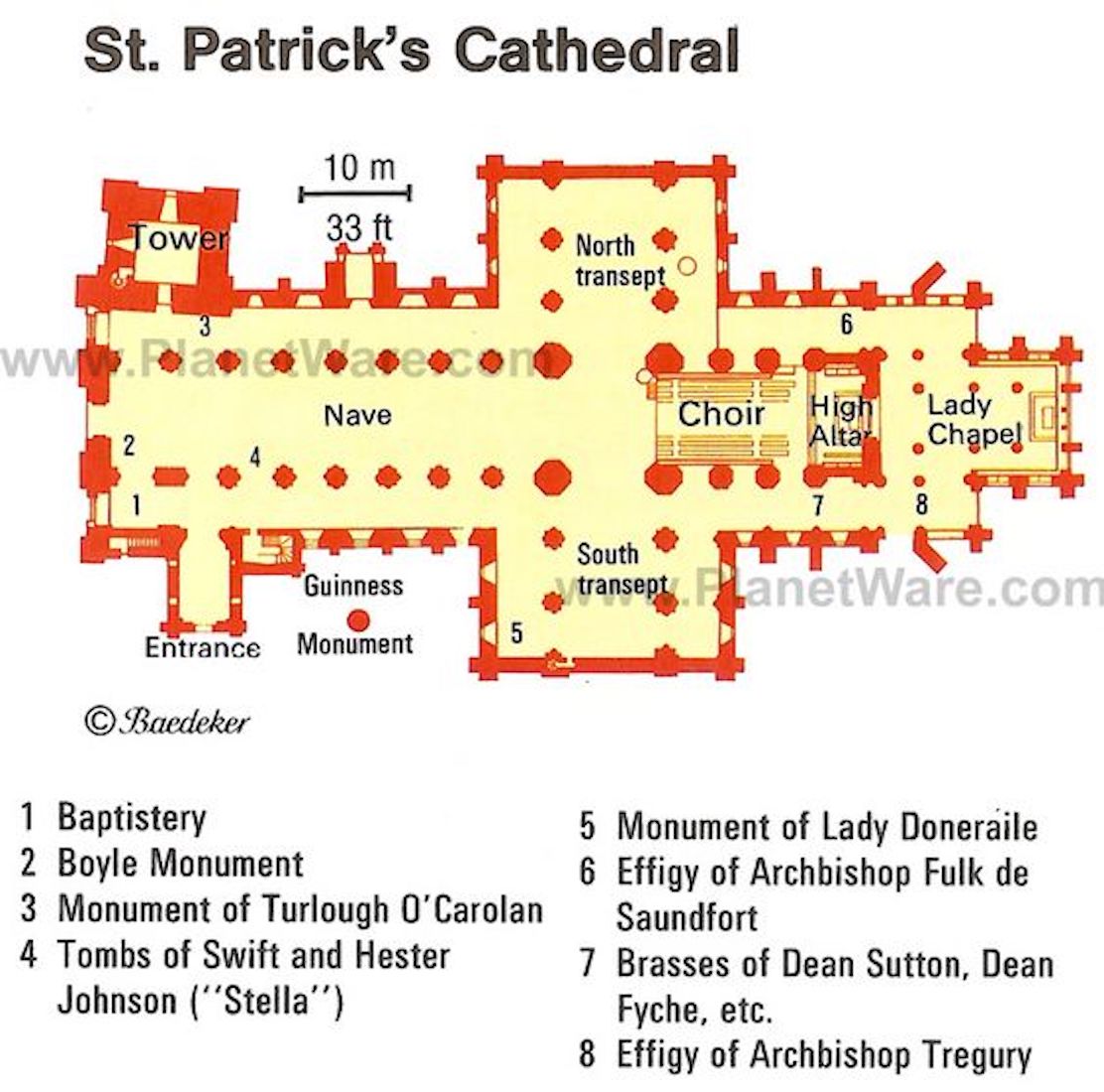
PLAN
This plan of the Cathedral shows the fairly simple lay-out, and some points of interest along the way. We enter by the Southwest door, and proceed to the West end of the Cathedral. From here we follow the walls right around in a clockwise direction until we arrive back at the South entry. From here we walk to the front nave, choir, and sanctuary (high altar).
HISTORY
Year Founded: 1191
Address: St Patrick’s Close, Patrick Street, Dublin 8 Republic of Ireland
Saint Patrick’s Cathedral in Dublin, Ireland, founded in 1191 as a Roman Catholic cathedral, is currently the national cathedral of the Church of Ireland. Christ Church Cathedral, also a Church of Ireland cathedral in Dublin, is designated as the local cathedral of the Diocese of Dublin and Glendalough.
Background
Unusually, St Patrick’s is not the seat of a bishop, as the Archbishop of Dublin has his seat in Christ Church Cathedral. Since 1870, the Church of Ireland has designated St Patrick’s as the national cathedral for the whole of Ireland, drawing chapter members from each of the twelve dioceses of the Church of Ireland. The dean is the ordinary for the cathedral; this office has existed since 1219. The most famous office holder was Jonathan Swift.
Status
There is almost no precedent for a two-cathedral city where the cathedrals belong to the same denomination. Some believe it was intended that St Patrick’s, a secular (diocesan clergy who are not members of a religious order, i.e. under a rule and, therefore, ‘regular’) cathedral, would replace Christ Church, a cathedral managed by an order.
A confrontational situation persisted, with considerable tension, over the decades after the establishment of St Patrick’s, and was eventually settled, more or less, by the signing of a six-point agreement of 1300, Pacis Compositio. Still extant, and in force until 1870, it provided that:
• The consecration and enthronement of the Archbishop of Dublin was to take place at Christ Church – records show that this provision was not always followed, with many archbishops enthroned in both, and at least two in Saint Patrick’s only.
• Christ Church had formal precedence, as the mother and senior cathedral of the diocese.
• Christ Church was to retain the cross, mitre and ring of each deceased Archbishop of Dublin.
• Deceased Archbishops of Dublin were to be buried alternately in each of the two cathedrals, unless they personally willed otherwise.
• The annual consecration of chrism oil for the diocese was to take place at Christ Church.
• The two cathedrals were to act as one and shared equally in their freedoms.
Over the following centuries, the two cathedrals functioned together in the diocese, until in the period of disestablishment of the Church of Ireland, the current designation of one as the cathedral of Dublin and Glendalough, and one as the national cathedral, was developed.
For more history of St Patrick’s Cathedral see
https://en.wikipedia.org/wiki/St_Patrick%27s_Cathedral,_Dublin
